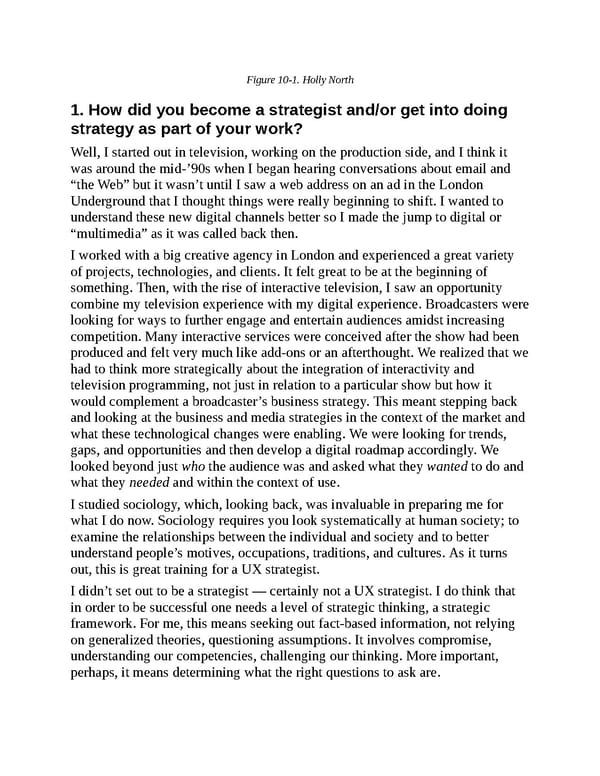Figure 10-1. Holly North 1. How did you become a strategist and/or get into doing strategy as part of your work? Well, I started out in television, working on the production side, and I think it was around the mid-’90s when I began hearing conversations about email and “the Web” but it wasn’t until I saw a web address on an ad in the London Underground that I thought things were really beginning to shift. I wanted to understand these new digital channels better so I made the jump to digital or “multimedia” as it was called back then. I worked with a big creative agency in London and experienced a great variety of projects, technologies, and clients. It felt great to be at the beginning of something. Then, with the rise of interactive television, I saw an opportunity combine my television experience with my digital experience. Broadcasters were looking for ways to further engage and entertain audiences amidst increasing competition. Many interactive services were conceived after the show had been produced and felt very much like add-ons or an afterthought. We realized that we had to think more strategically about the integration of interactivity and television programming, not just in relation to a particular show but how it would complement a broadcaster’s business strategy. This meant stepping back and looking at the business and media strategies in the context of the market and what these technological changes were enabling. We were looking for trends, gaps, and opportunities and then develop a digital roadmap accordingly. We looked beyond just who the audience was and asked what they wanted to do and what they needed and within the context of use. I studied sociology, which, looking back, was invaluable in preparing me for what I do now. Sociology requires you look systematically at human society; to examine the relationships between the individual and society and to better understand people’s motives, occupations, traditions, and cultures. As it turns out, this is great training for a UX strategist. I didn’t set out to be a strategist — certainly not a UX strategist. I do think that in order to be successful one needs a level of strategic thinking, a strategic framework. For me, this means seeking out fact-based information, not relying on generalized theories, questioning assumptions. It involves compromise, understanding our competencies, challenging our thinking. More important, perhaps, it means determining what the right questions to ask are.
 UX Strategy: How to Devise Innovative Digital Products that People Want Page 278 Page 280
UX Strategy: How to Devise Innovative Digital Products that People Want Page 278 Page 280